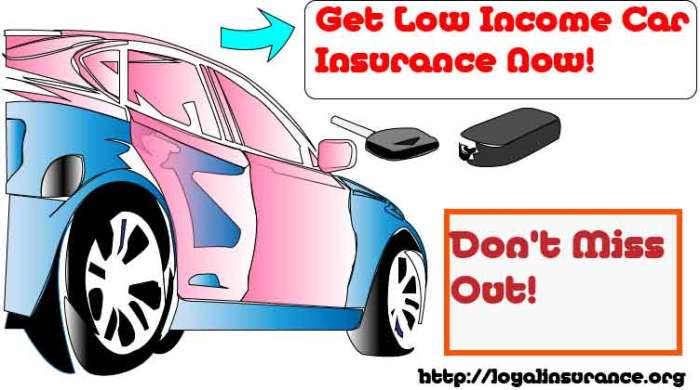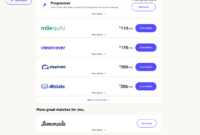Low Car Insurance – When it comes to car insurance, finding a policy that provides adequate protection without exceeding your budget is essential. Low car insurance offers drivers the opportunity to secure affordable coverage while meeting their unique needs. Whether you’re looking for basic liability insurance or a comprehensive plan, understanding how premiums are calculated and the various factors that influence insurance costs can help you make informed decisions and keep your car protected.
In this guide, we’ll explore the concept of low car insurance, explain the types of coverage available, and provide useful tips for finding the best deals. Whether you’re a new driver or an experienced one, this guide will help you navigate the complexities of car insurance to ensure you’re getting the best value for your money.
Table of Contents
ToggleUnderstanding Low Car Insurance
Low car insurance refers to policies that offer affordable coverage options, typically for drivers with favorable risk factors such as a clean driving record, low mileage, or an older vehicle. This type of insurance is ideal for individuals looking to minimize their insurance costs while still maintaining the necessary coverage required by law.
For many drivers, the annual premium for low car insurance typically ranges between $500 and $1,000, which is significantly lower than the national average of around $1,500 per year. These lower premiums make it easier for drivers to manage their budgets without sacrificing coverage.

However, it’s important to recognize that low car insurance does not mean minimal protection. Instead, it refers to policies that offer essential coverage at a reduced cost, allowing drivers to meet legal requirements and protect their vehicles from common risks.
Factors That Influence Car Insurance Premiums
Several factors can impact the cost of your car insurance premiums, including:
- Age and Gender: Younger drivers and male drivers tend to pay higher premiums due to the statistical likelihood of accidents. Conversely, older and female drivers often qualify for lower rates.
- Driving Record: A clean driving record is one of the most significant factors in securing low car insurance premiums. Drivers with a history of accidents or traffic violations will typically face higher rates.
- Location: Where you live plays a significant role in determining your insurance costs. Urban areas with high traffic density or states prone to natural disasters, like Florida, tend to have higher premiums.
- Vehicle Type and Value: The type of car you drive, its value, and safety features also influence your premium. High-performance or luxury vehicles often come with higher insurance costs, while older, less valuable cars may be cheaper to insure.
- Coverage Amount: The level of coverage you select will directly affect your premium. More comprehensive policies with higher coverage limits will cost more than basic liability insurance.
- Mileage: The more miles you drive each year, the higher the risk of being involved in an accident, leading to higher premiums. Low-mileage drivers may qualify for discounts.
How to Find Low Car Insurance
Securing low car insurance requires a bit of research and planning. Here are some practical steps to help you find affordable coverage:
- Maintain a Clean Driving Record: The best way to lower your insurance premiums is by maintaining a spotless driving record. Avoiding accidents, speeding tickets, and traffic violations will make you eligible for better rates.
- Bundle Policies: Many insurance companies offer discounts if you bundle your car insurance with other types of coverage, such as homeowners or renters insurance. Bundling can save you a significant amount on your premiums.
- Compare Quotes: One of the most effective ways to find low car insurance is to compare quotes from multiple insurance providers. Each company uses different criteria to assess risk, so shopping around can help you find the best deal.
- Opt for Higher Deductibles: Increasing your deductible—the amount you pay out of pocket before your insurance kicks in—can lower your premium. However, make sure you choose a deductible amount you can afford in case of an accident.
- Choose a Less Expensive Vehicle: If you’re in the market for a new car, consider purchasing a vehicle with a lower value or one that has strong safety features. Cars that are cheaper to repair and have a lower likelihood of theft often come with reduced insurance premiums.
- Take Advantage of Discounts: Many insurance companies offer a variety of discounts that can lower your premiums. These include safe driver discounts, low-mileage discounts, and discounts for completing defensive driving courses.
- Limit Optional Coverage: While it’s essential to have sufficient coverage, you may be able to reduce your premium by limiting optional coverage that you don’t need. For example, if you have an older vehicle, you may opt for liability-only insurance rather than comprehensive coverage.
Types of Low Car Insurance Coverage
When exploring low car insurance options, it’s important to understand the different types of coverage available. Depending on your needs and budget, you can choose from a range of policy options:
- Liability-Only Coverage: This is the most basic type of car insurance required by law in most states. Liability insurance covers the costs associated with injuries and property damage you cause to others in an accident. It’s typically the cheapest option, but it won’t cover any damage to your vehicle.
- Collision Coverage: This type of insurance covers the cost of repairing or replacing your vehicle if it’s damaged in an accident, regardless of who is at fault. Collision coverage is optional but may be required if you lease or finance your car.
- Comprehensive Coverage: Comprehensive insurance provides protection for damage to your vehicle caused by events other than collisions, such as theft, vandalism, or weather-related damage. While it’s not required by law, it can offer valuable peace of mind, especially in areas prone to natural disasters.
- Uninsured/Underinsured Motorist Coverage: This type of coverage protects you if you’re involved in an accident with a driver who doesn’t have sufficient insurance. It covers your medical expenses and damages to your vehicle in cases where the at-fault driver cannot pay.
- Personal Injury Protection (PIP): PIP coverage is required in some states and covers medical expenses, lost wages, and other costs associated with injuries sustained in a car accident, regardless of fault.
State-Specific Insurance Considerations
It’s important to keep in mind that insurance regulations and requirements vary by state, which can affect your ability to find low car insurance. For example:
- New Jersey: Drivers in New Jersey are required to carry a minimum level of liability insurance, but the state’s competitive insurance market can make it easier to find affordable coverage. Be sure to explore options for cheap car insurance in NJ by comparing quotes and taking advantage of available discounts.
- Florida: Florida car insurance rates tend to be higher than the national average due to the state’s high population density and exposure to hurricanes. However, by comparing rates from multiple insurers and seeking out discounts for low-mileage driving or safe vehicle features, it’s still possible to find low car insurance in Florida.
Frequently Asked Questions (FAQ)
- What factors can affect my car insurance premiums?
- Factors such as age, driving history, location, vehicle type, and the amount of coverage you choose all play a role in determining your car insurance premiums.
- What types of low car insurance policies are available?
- Common types of low car insurance policies include liability-only, collision, comprehensive, and uninsured/underinsured motorist coverage.
- How can I qualify for low car insurance rates?
- To qualify for low insurance rates, maintain a clean driving record, compare quotes from multiple insurers, choose a higher deductible, and take advantage of any discounts for which you may be eligible.
- Why should I compare car insurance quotes?
- Comparing car insurance quotes allows you to find the most competitive rates and ensures that you’re not overpaying for your coverage. Each insurer evaluates risk differently, so shopping around can lead to significant savings.
- Is comprehensive insurance necessary?
- Comprehensive insurance isn’t required by law, but it provides valuable protection against non-collision-related damage, such as theft or weather-related events. If your car is valuable or you’re in a high-risk area, comprehensive coverage may be worth considering.
Conclusion
Low car insurance offers drivers the opportunity to secure affordable coverage that meets their needs. By understanding the factors that affect premiums, comparing quotes from multiple providers, and maintaining a good driving record, you can find a policy that provides reliable protection without straining your budget. Remember to explore all available discounts, consider bundling policies, and choose a coverage level that aligns with your financial situation and risk tolerance.
Whether you’re insuring an older vehicle or looking to reduce your premiums, low car insurance ensures you can stay protected on the road without breaking the bank.




